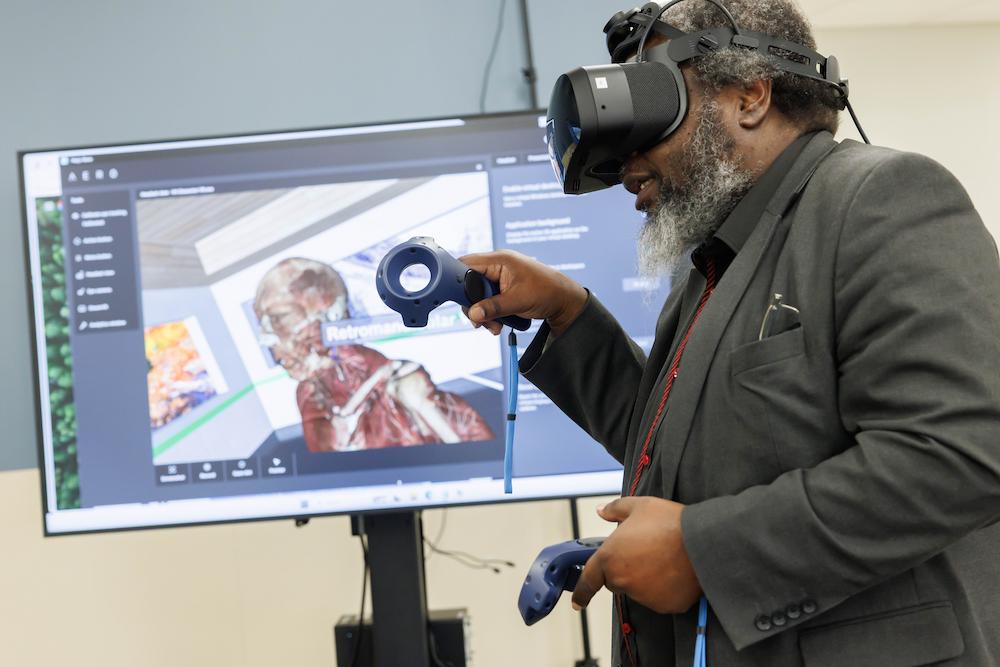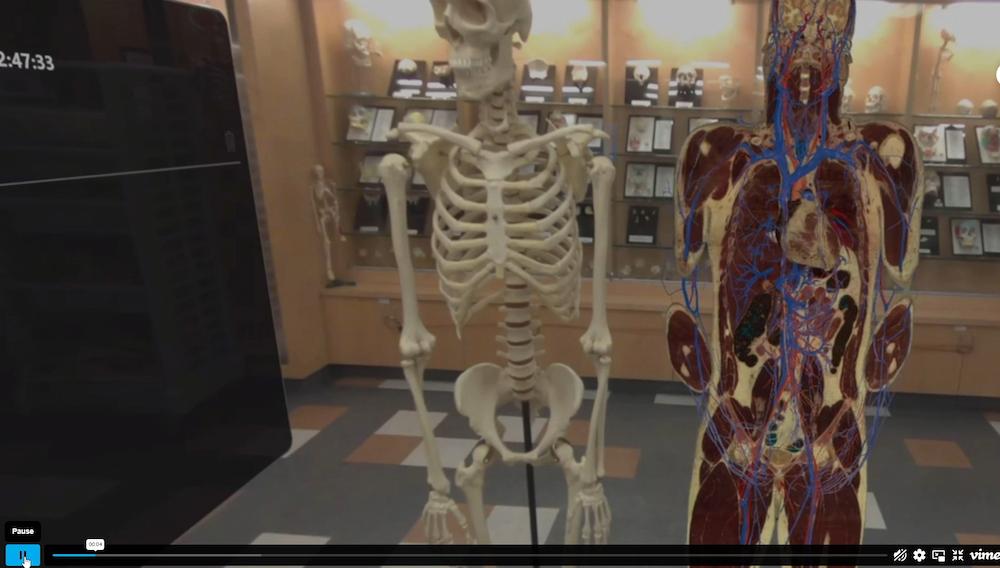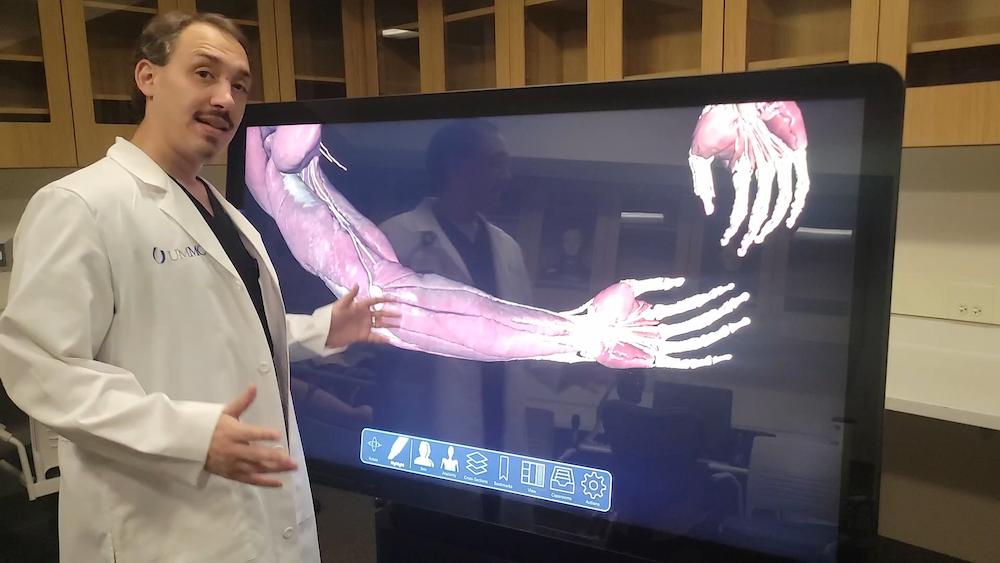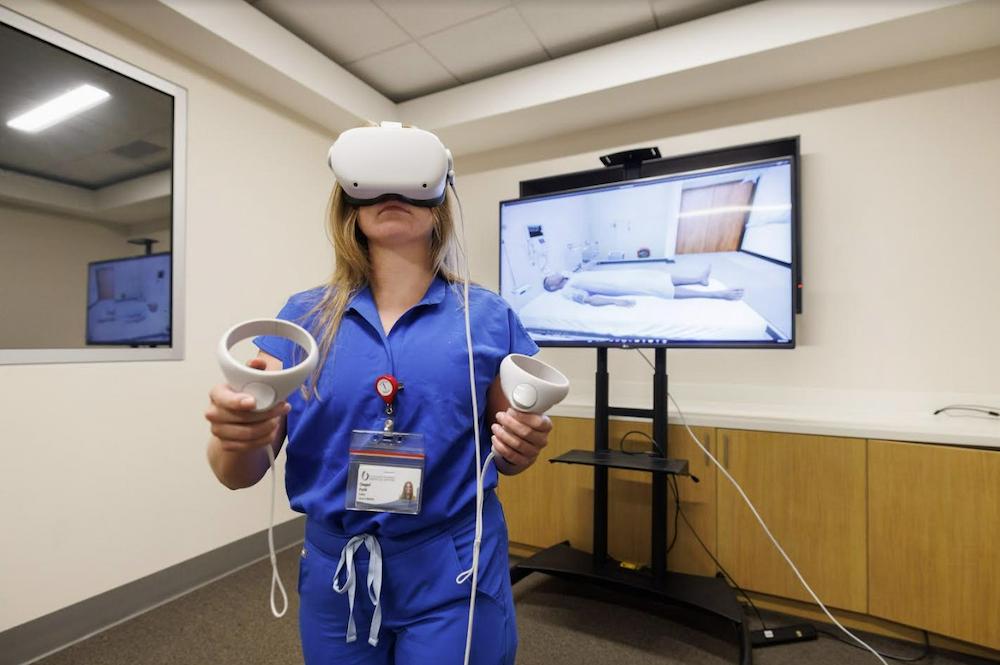Revolutionizing Biomedical Education: The Impact of Immersive Technologies

In recent years, advancements in technology have paved the way for transformative changes in various fields, and biomedical education is no exception. Immersive technologies, encompassing virtual reality (VR), augmented reality (AR), and mixed reality (MR), have emerged as powerful tools that offer unique learning experiences. The Department of Advanced Biomedical Education at UMMC is incorporating these technologies to enhance learners’ experiences and to bring innovation into the learning process.
Types of Immersive Technologies
- Virtual Reality (VR) – VR creates a simulated environment that immerses users in a three-dimensional, computer-generated world. In biomedical education, VR is utilized to replicate complex anatomical structures and physiological processes. Applications include virtual dissection labs, where students can explore the human body in detail without the need for cadavers. VR also allows students to engage in medical procedures, enhancing their skills and confidence in a risk-free environment.
- Augmented Reality (AR) – AR overlays digital information onto the real-world environment, enhancing the user's perception of their surroundings. In biomedical education, AR is employed to provide real-time information and visual aids during practical sessions. Students can use AR applications on smartphones or AR glasses to view anatomical structures, medical instruments, and patient data, facilitating a deeper understanding of the subject matter.
- Mixed Reality (MR) – MR combines elements of VR and AR, creating an interactive environment where digital and physical objects coexist. In biomedical education, MR enables students to interact with virtual models while still engaging with the real world. For instance, students can use MR devices to simulate surgeries, where virtual patient data is overlaid onto physical mannequins. This integration of digital and physical elements enhances the realism of the learning experience.
- 3D Printing and 3D Visualizations – 3D printing is a process of creating three-dimensional objects from a digital file. 3D Visualization is creating a 3D digital image from a 2D image from CT, MRI or photograph metadata. They can be used to create physical models of the human body and its systems, allowing students to gain a better understanding of anatomy and physiology.
- Virtual Simulation – Virtual Simulation is a technique used to replicate real-world scenarios and situations in a virtual space. It can be used to create realistic learning experiences in biomedical education, allowing students to practice and hone their skills on medical procedures, and communications style in a safe and controlled environment.
Benefits of Immersive Technologies in Biomedical Education
- Enhanced Engagement – Immersive technologies captivate students' attention, making learning more engaging and enjoyable. The interactive nature of VR, AR, and MR applications encourages active participation, leading to better retention of information.
- Realistic Simulations – Immersive technologies offer realistic simulations of medical scenarios, procedures, and environments. This realism allows students to practice and refine their skills in a safe and controlled setting, preparing them for real-world clinical situations.
- Access to Remote Learning – With immersive technologies, students can access high-quality biomedical education remotely. VR, AR, and MR platforms enable learners to participate in virtual labs, collaborative projects, and interactive lectures from anywhere in the world, overcoming geographical constraints.
- Customized Learning Paths – Immersive technologies allow educators to tailor learning experiences to individual student needs. Virtual modules can be adapted to accommodate various learning styles, ensuring that students receive personalized instruction and support.
- Cost-Efficiency – Utilizing immersive technologies in biomedical education can reduce the costs associated with traditional teaching methods. Virtual dissection labs, for example, eliminate the need for expensive cadavers and maintenance of physical laboratories.
Moreover, the use of virtual reality (VR) in biomedical education has shown promising effects on learners, including several notable brain changes. Here are some key findings related to brain changes observed when using VR in biomedical education:
- Enhanced Engagement – VR has been found to increase learner engagement compared to traditional teaching methods. Studies have shown increased activation in brain regions associated with attention, motivation, and memory encoding during VR-based learning experiences.
- Spatial Navigation Skills – VR simulations that involve exploring anatomical structures or surgical procedures can enhance spatial navigation skills. This type of learning has been linked to structural and functional changes in brain regions responsible for spatial cognition, such as the hippocampus.
- Multisensory Integration – VR provides a multisensory learning environment by combining visual, auditory, and haptic feedback. This multisensory stimulation has been shown to promote stronger neural connections and enhanced integration of sensory information.
- Neuroplasticity – VR-based learning experiences can promote neuroplasticity, the brain's ability to reorganize and form new neural connections. By repeatedly practicing and interacting with virtual environments, learners can strengthen neural pathways related to specific skills or knowledge areas.
- Empathy and Perspective-Taking – VR can facilitate immersive experiences that promote empathy and perspective-taking in learners. Such experiences have been associated with increased activation in brain regions involved in social cognition and empathy, such as the anterior cingulate cortex and the insula.
It's important to note that the field of research on brain changes specifically related to VR in biomedical education is still evolving, and further studies are needed to gain a deeper understanding of the underlying mechanisms. However, the existing research suggests that VR has the potential to elicit meaningful brain changes that can enhance learning outcomes in the biomedical education domain.
Immersive technologies have ushered in a new era of learning in biomedical education, providing students with unparalleled opportunities to explore, understand, and practice complex concepts. As these technologies continue to evolve, the integration in the learning process will likely become increasingly commonplace, revolutionizing the way future healthcare professionals are educated and trained. The benefits of enhanced engagement, realistic simulations, remote learning capabilities, customized learning paths, and cost-efficiency underscore the transformative potential of immersive technologies in shaping the next generation of biomedical professionals.
Virtual Reality (VR): Showing a virtual anatomical specimen utilizing a visor to enhance the visual experience of learning.

Augmented Reality (AR): Showing a Virtual Reality (VR) prosection of muscles and vessels on the right side within a real world space showing a skeleton in a room.

3D Visualization: showing a 3D image of a 2D photography of a CT metadata (upper panel) and a 3D digital model of an arm (lower panel)

Virtual Simulation: showing a learner performing in a virtual clinical scenario.



